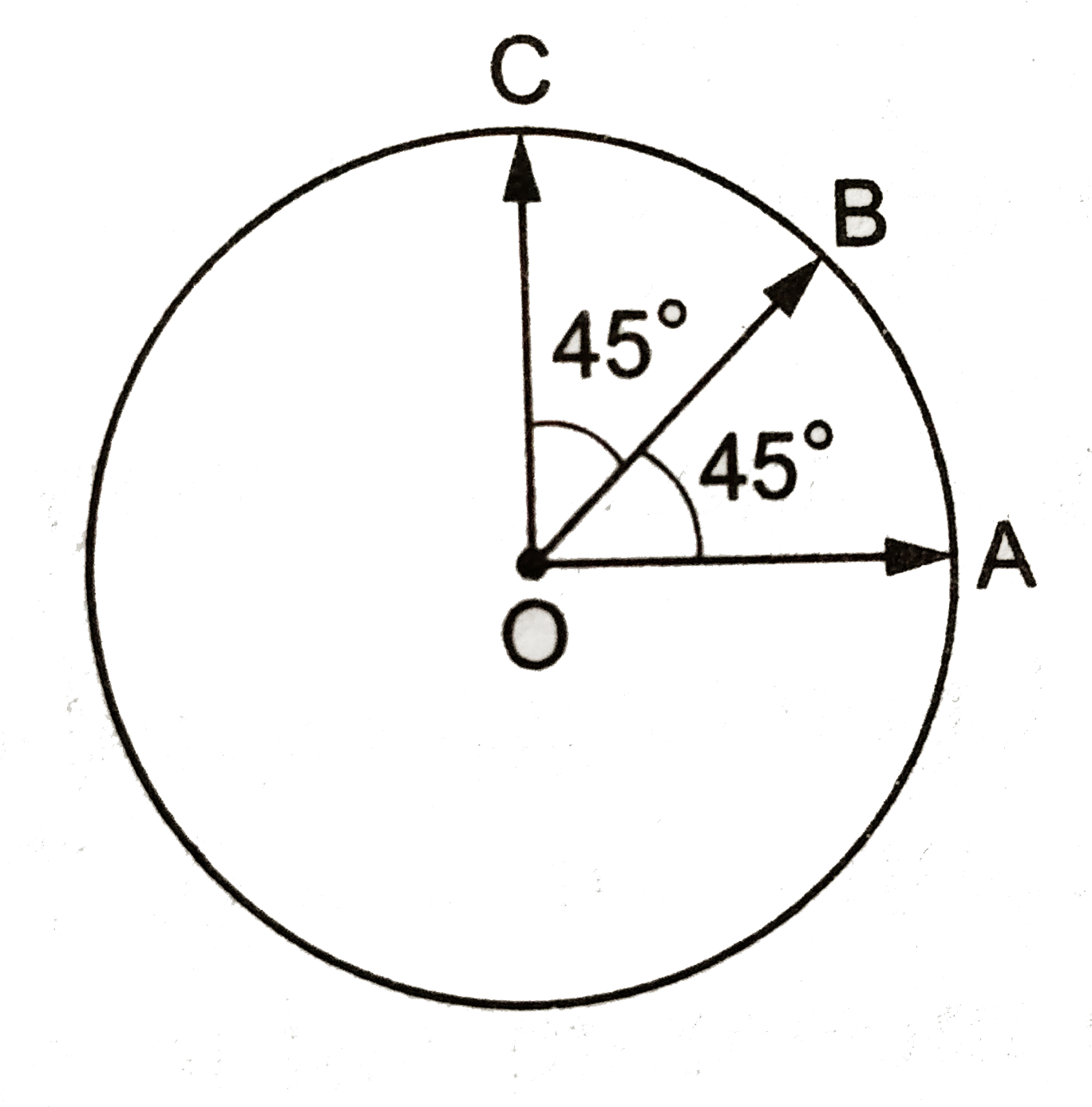The magnitude of vectors −−→OA,−−→OBand−−→OC in figure are equal. Find the direction of −−→OA+−−→OB−−−→OC.
 .
.
Video Solution
Text Solution
Let OA=OB=OC=F.
x - component of −−→OA=Fcos300=F√32
x-component of −−→OB=Fcos600=F2
x−compo≠ntofvec(OC)=F cos 135^0= - F/sqrt2<br>x-component of −−→OA+−−→OB−−−→OC
−(F√32)+(F2)+(−F√2)
=F2(√3+1+√2).
y-component of −−→OA=Fcos600=F2
y- component of −−→OB=Fcos1500=(F√32
y- component of −−→OC=Fcos450=F√2.
y-component of −−→OA+−−→OB+−−→OC
=(F2)(√3+1+√2)
y-component of −−→OA=Fcos600=F2
y-component of −−→OC=Fcos450=F√2
y-component of −−→OA+−−→OB+−−→OC
=(F2)+(−F√32−(F√2)
=F/2 (1-sqrt3-sqrt2)<br>Ang≤ofvec(OA)+vec(OB)-vec(OC)withtheX−aξs<br>=tan^-1 (F/2 (1-sqrt3-sqrt2))/(F/2 (1+sqrt3+sqrt2))= tan^-1 (1-sqrt3-sqrt2)/(1+sqrt3+sqrt2)
|
Topper's Solved these Questions
- PHYSICS AND MATHEMATICSBOOK - HC VERMACHAPTER - PHYSICS AND MATHEMATICSEXERCISE - Short Answer
14 Videos
- PHYSICS AND MATHEMATICSBOOK - HC VERMACHAPTER - PHYSICS AND MATHEMATICSEXERCISE - Objective 1
6 Videos
- PHYSICS AND MATHEMATICSBOOK - HC VERMACHAPTER - PHYSICS AND MATHEMATICSEXERCISE - Exercises
34 Videos
- NEWTON'S LAWS OF MOTIONBOOK - HC VERMACHAPTER - NEWTON'S LAWS OF MOTIONEXERCISE - Exercises
42 Videos
- REST AND MOTION : KINEMATICSBOOK - HC VERMACHAPTER - REST AND MOTION : KINEMATICSEXERCISE - Exercises
51 Videos
Similar Questions
Knowledge Check
The resultant of the three vectors −−→OA,−−→OB and −−→OC shown in figure is
 ArB2rCr(1+√s)Dr(√2−1)
ArB2rCr(1+√s)Dr(√2−1)Two vector →A and →B have equal magnitudes. Then the vector →A+→B is perpendicular :
A→A×→BB→A−→BC3→A−3→BDAll of theseLet O, O' and G be the circumcentre, orthocentre and centroid of a ΔABC and S be any point in the plane of the triangle.
Statement -1: −−−→O'A+−−−→O'B+−−−→O'C=2−−−→O'O
Statement -2: −→SA+−−→SB+−−→SC=3−−→SGAStatement - 1 is True, Statement - 2 is True , Statement - 2 is a correct explanation for Statement - 1.BStatement -1 is True, Statement - 2 is True, Statement -2 is not a correct explanation for Statement - 1.CStatement - 1 is True, Statement - 2 is False.DStatement - 1 is False, Statement - 2 is True.
The resultant of vectors −−→OAand−−→OB is peerpendicular to vec(OA). Find the angle AOB.

View SolutionGiven a parallelogram OACB. The lengths of the vectors −−→OA, −−→OB & −−→AB are a, b & c respectively. The scalar product of the vectors −−→OC & −−→OB is
(A) a2−3b2+c22
(B) 3a2+b2−c22
(C) 3a2−b2+c22
(D) a2+3b2−c22
View SolutionFind the resultant of the three vectors →OA,→OB and →OC each of magnitude r as shown in figure?
View SolutionThe sum of the three vectors shown in figure is zero. Find the magnitudes of the vectors −−→OBand−−→OC.
View SolutionIf →a and →b are vectors of equal magnitude, write the value of (→a+→b).→a−→b.
View Solution

